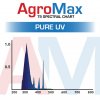Prawn Connery
Well-Known Member
But you are.
Even though it may not be a complete picture, each of the elements you are providing are a substitute for the natural environment in which the plant evolved and thrives. Your substitute may be better or worse (often worse - not you, personally, but indoor growing in general), but in each example the natural environment is your yardstick - is it not?
How much more difficult would it be to grow in a synthetic environment if we did not have the natural environment for reference?
It would be like assembling a jigsaw puzzle without a picture.
Even though it may not be a complete picture, each of the elements you are providing are a substitute for the natural environment in which the plant evolved and thrives. Your substitute may be better or worse (often worse - not you, personally, but indoor growing in general), but in each example the natural environment is your yardstick - is it not?
How much more difficult would it be to grow in a synthetic environment if we did not have the natural environment for reference?
It would be like assembling a jigsaw puzzle without a picture.







